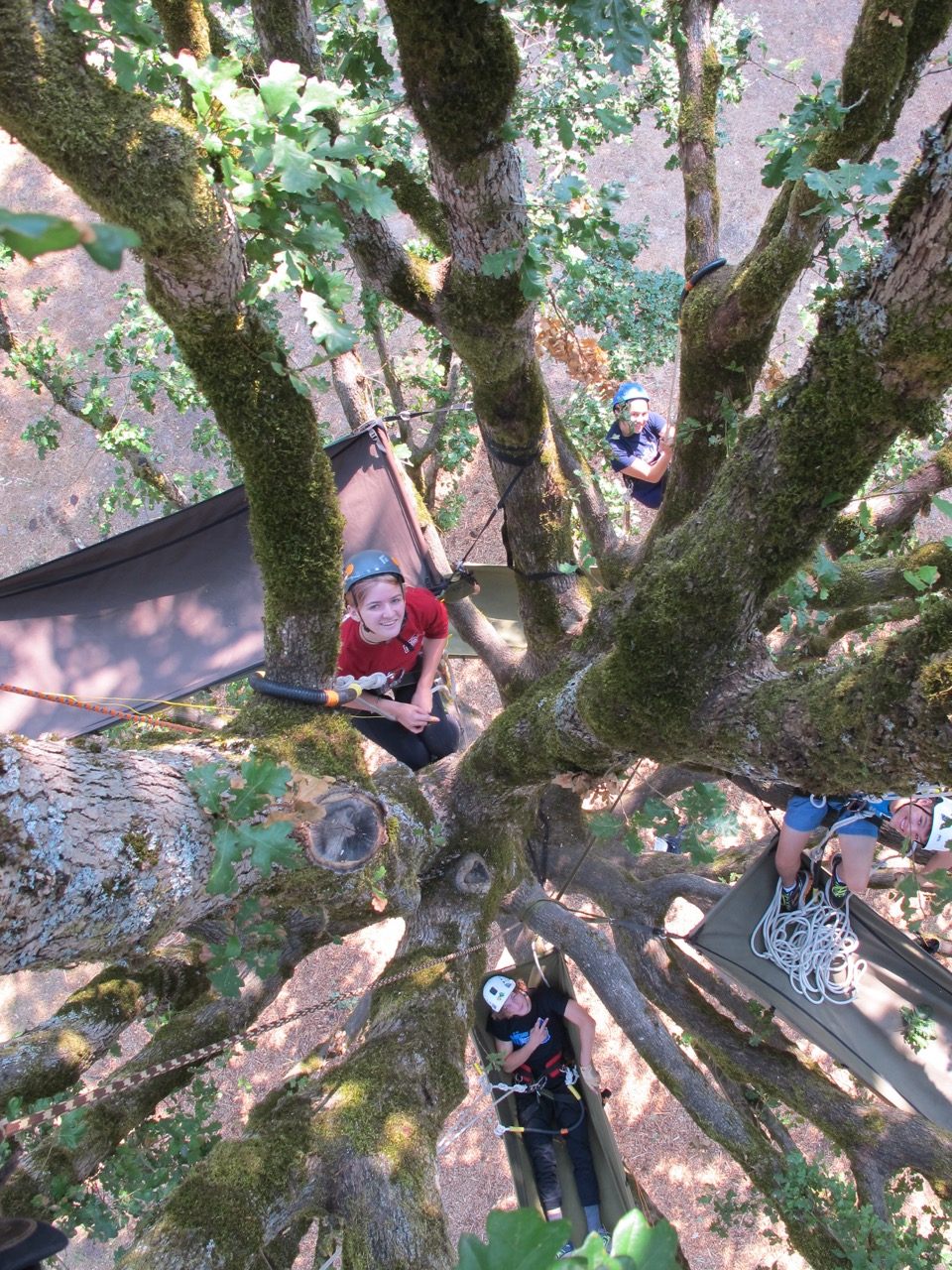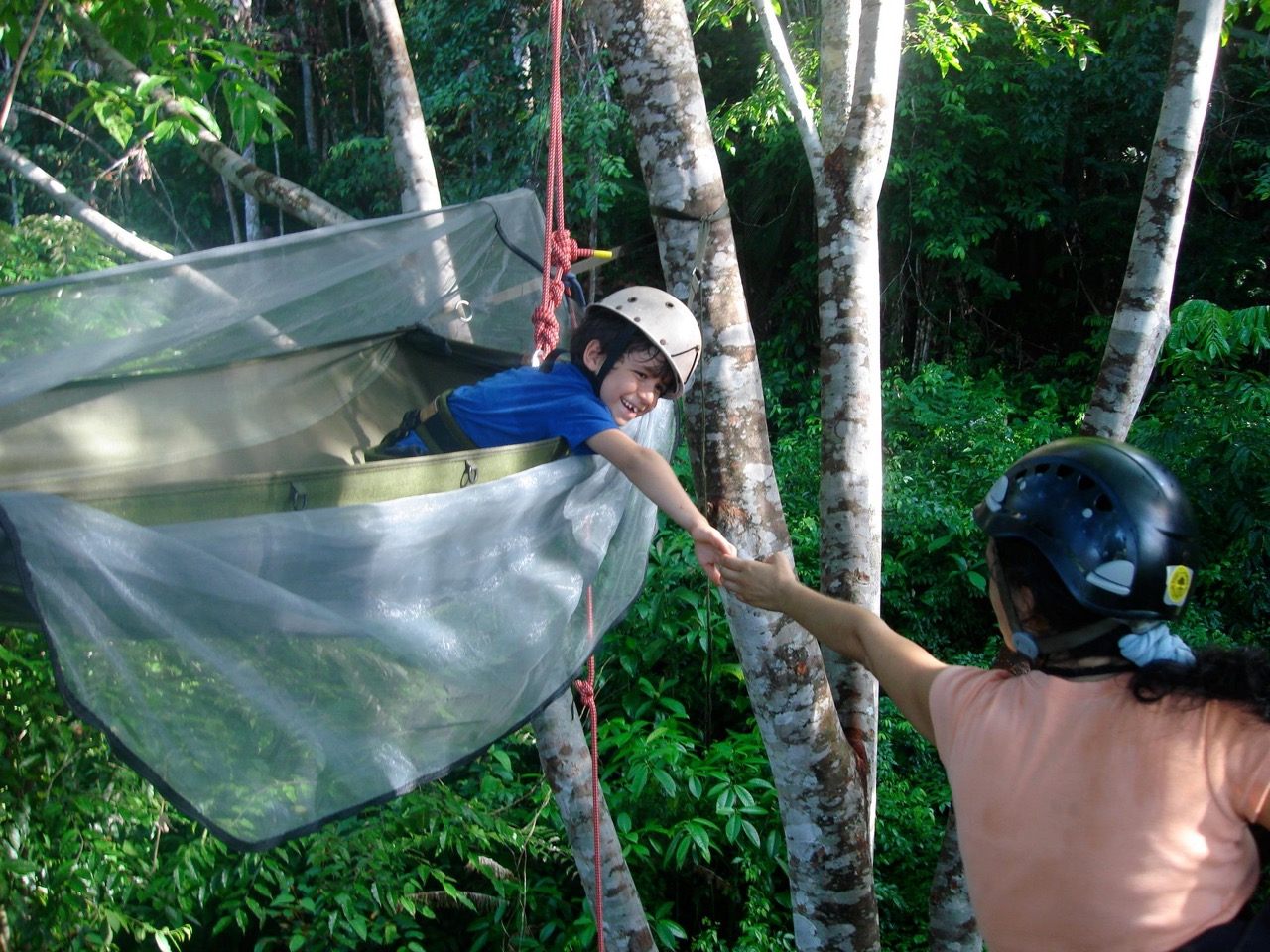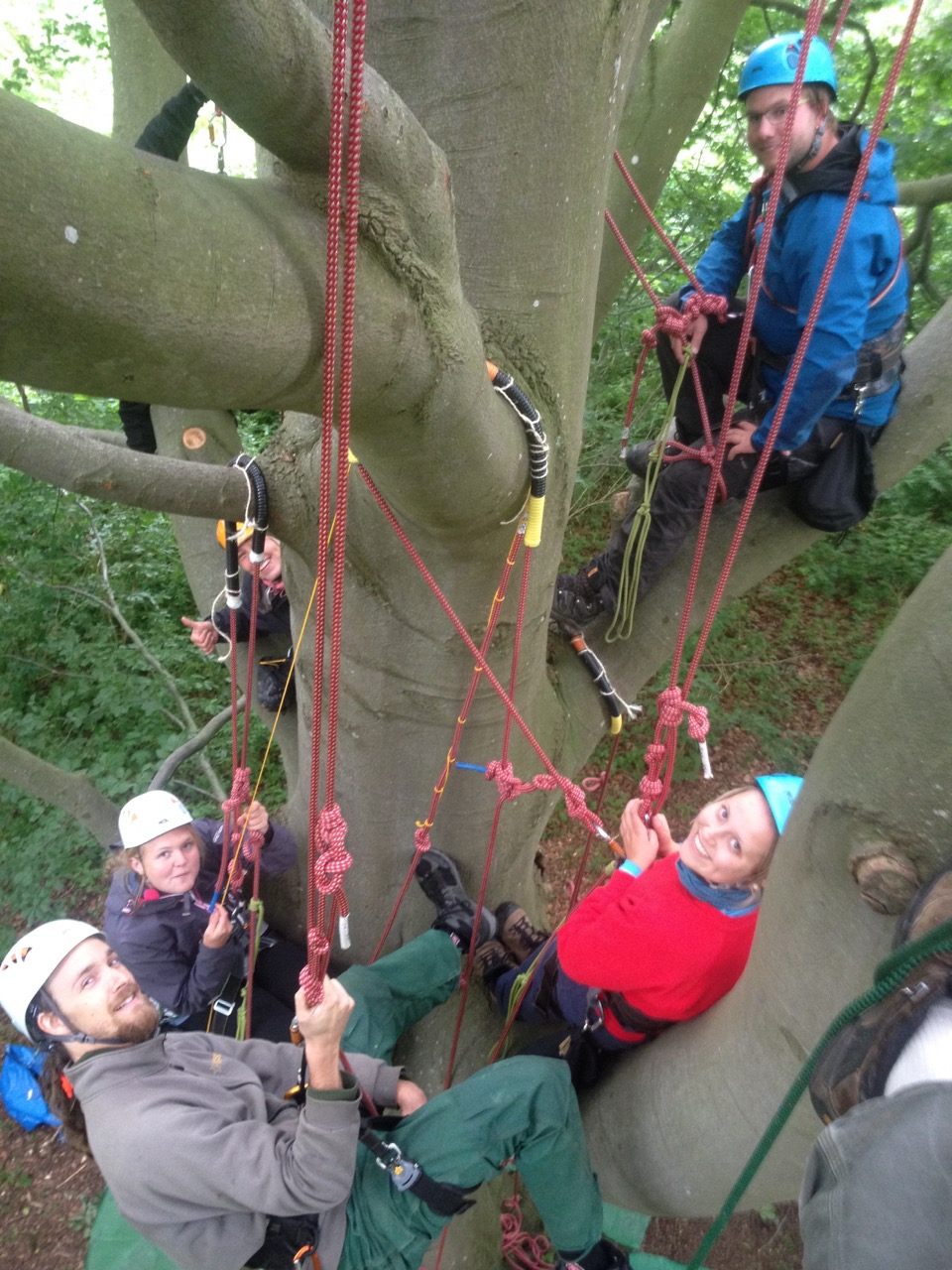Learn the Secrets of Technical Tree-Climbing
It’s more ropes and ladders than arms and legs.

A group of Reed College students getting ready for a night in the tree tops at one of Kovar’s tree climbing classes in Oregon. (Photo: Tim Kovar/Tree Climbing Planet)
Julia Butterfly Hill did it. This guy did a Reddit AMA about it. Most recently, a Seattle man initially refused to come down after 24 hours in it.
Living in a tree is not for everyone, but tree climbing is an attainable goal. On April 16’s Obscura Day, technical tree climbing expert Tim Kovar, the founder of Tree Climbing Planet, will host a four-hour event at Pinkerton Park in Franklin, Tennessee, where attendees will be able to quickly and safely ascend up into the air.
The spread of technical tree climbing began with Peter “Treeman” Jenkins, who founded the world’s first technical tree climbing school in Atlanta, Georgia in 1983. (Jenkins’ personal life mission statement: “Return the human race back to the trees.”)
After starting up as an arborist, or tree doctor, Kovar joined the school, Tree Climbing International (TCI), and became a chief instructor for many years. Since its founding, they have worked with three-quarters of a million people worldwide, with zero accidents.
At TCI, Kovar honed his expertise in recreational climbs, tree-top camping, and dinner dates, mastering his canopy culinary skills; he worked with people who had muscular dystrophy and the elderly, as well as researchers, film crews, and ecotourism projects. In 2005, noticing that tree climbing expertise hadn’t really made it out west, Kovar moved to Oregon and soon after opened his own school, Tree Climbing Planet.
The way they climb is not invasive, he says; most of the time you’re not on the trees or branches themselves, but rather suspended, kind of like puppets. However, having the proper gear and proper training, says Kovar, is critical. “If you get stuck in the tree, 100 feet up and drop your rope, who do you call?” he points out. The fire department and 911 have no idea how to rescue you out of a tree, he says, so you could be stuck there for quite a while.

A mother and son tree climbing together in the Amazon jungle. (Photo: Leo Principe/Tropical Tree Climbing)
They employ saddles and harnesses specific to tree climbing, designed to be sat in for long periods of time (unlike rock climbing gear, for instance). When Kovar sets up a climbing gig, he arrives a few hours in advance to get all the ropes in place. To get this started, he ties a bean-bag type of device to a very small cord, which is tossed high up over a branch and then secured to a climbing rope, which is then tugged over. In the California redwoods or the Amazon jungle, they sometimes need to use giant slingshots, or a crossbow with fishing line, to propel the cord high enough.
A magic knot holds the climber in place, and ascending involves a sit-stand motion that pushes the knot higher up. All of this takes just five minutes to explain, meaning that you’ll be 30 feet in the air before you know it. The system is designed for 8-year-olds to to 85-year-olds; Kovar has a friend who’s taken up a lady aged 102.

Imagine rising up into a heights of a cathedral of redwoods. (Photo: Richard Masoner/Cyclelicious/CC BY-SA 2.0)
Sleeping up in the trees—or “ZZZs in Trees,” as Kovar likes to call it—is a little more complicated. For tree-top camping, there are specially designed hammocks named “tree boats.” You’ll be wearing your harness the whole time you’re above ground, but you can loosen it a tad when you go to bed so that you won’t have a wedgie all night. It takes a little getting used to, but by now, after nearly 500 nights in the treetops, Kovar barely notices. As for the bathroom, you can either take a trip to the ground or utilize handy pee bottles to relieve yourself. Cooking involves lashed down camping stoves and a lot of care—you don’t want any ropes, or the tree itself, to catch on fire.
“There’s nothing like a fresh hot cup of coffee in the morning, when you’re watching and listening to the birds around you, 50 feet up in the tree,” says Kovar. “Yeah, it’s quite special.”

Folks in Denmark getting a hang of the ropes at a tree climbing class. (Photo: Tim Kovar/Tree Climbing Planet)
Recently, Kovar has been getting a lot more interest from international folks hoping to bring the techniques back to their country, kind of as tree climbing pioneers. Sometimes they are focused on ecotourism or creating a business, while others need it for photography or canopy research. There aren’t too many places you can learn technical tree climbing skills, so people will travel far distances, says Kovar.
Kovar says that in teaching people these techniques and guiding them up into the trees, he can reeducate them about the environment without preaching. “Hopefully when you come down out of the tree, you’re a little more aware of your environment, your surroundings, the ecosystem, and the planet—and you’ll think twice before grabbing that extra handful of napkins,” he says.
“It’s a great thing to hug a tree on the ground, but when you can get up in the branches and the trees hug you, it’s just as special too,” says Kovar. “I believe that they enjoy us being up in their arms.”












Follow us on Twitter to get the latest on the world's hidden wonders.
Like us on Facebook to get the latest on the world's hidden wonders.
Follow us on Twitter Like us on Facebook